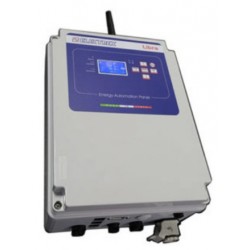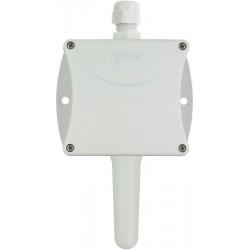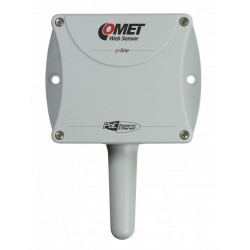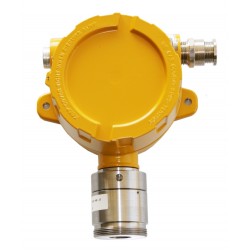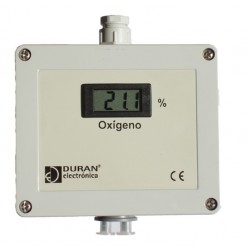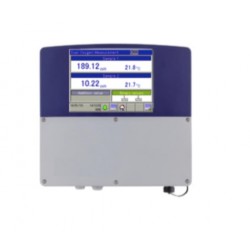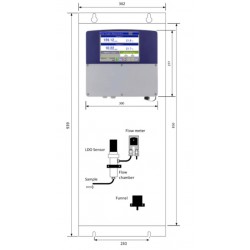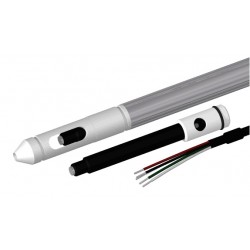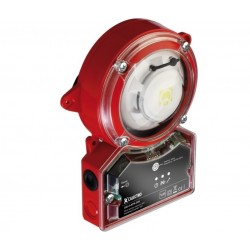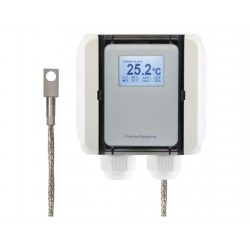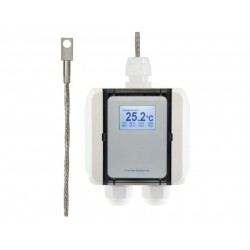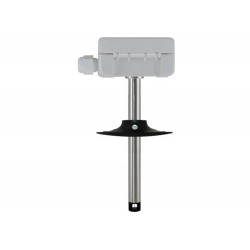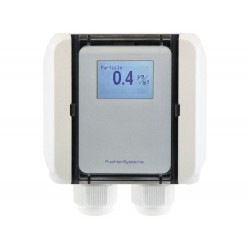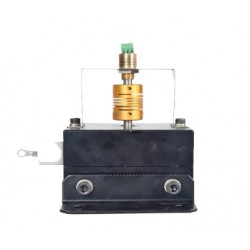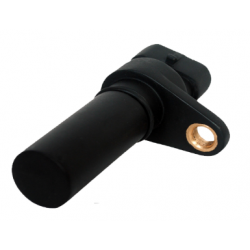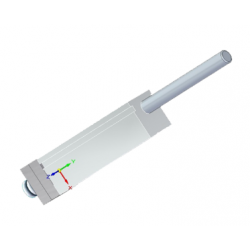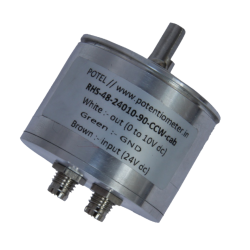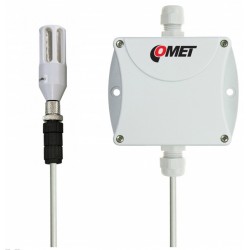No products
Prices are tax excluded
Product successfully added to your shopping cart
There are 0 items in your cart. There is 1 item in your cart.
Catalog
TRANSMITTERS AND TRANSDUCERS
-
PRODUCTS
- WEATHER STATIONS
- WATER QUALITY MONITORING
- TRANSMITTERS AND TRANSDUCERS
- TRAINING & EDUCATION SYSTEMS
- SPECTROMETERS & SPECTRO-RADIOMETERS
- SENSORS & PROBES
- POWER & ENERGY
- MEASUREMENT AND CALIBRATION INSTRUMENTS
- LIGHT & LASER SOURCES
-
LABORATORY, PHARMACY & MEDICINE EQUIPMENT
- Water Quality
- Vet
- VARIOUS
- VACUUM SYSTEMS
- Ultrasonic Baths
- Stirrers
- SPECTRO-PHOTOMETERS
- Showers
- Sensores y Sondas
- Rotary Evaporator
- Refractometers
- Pumps
- PRECISION BALANCES
- Plant Growth Chambers
- PARTICLE ANALYZERS
- OVENS
- ORBITAL SHAKERS
- Mills
- MILK ANALYZERS
- Microtome
- Microscopes
- Microplate Readers
- MEDICAL ANALYZERS
- Laboratory Reactors
- INFLAMMATION ANALYZERS
- INCUBATORS
- HUMAN TEMPERATURE
- Hotplates
- GAS BURNERS
- Gas Analyzers & Detectors
- FAT ANALYZER
- Evaporators
- Distillers
- Dissolved Oxygen
- Density Meters
- Cultivators
- COLORIMETERS/GLOSS METERS
- COLD STORAGE ROOMS
- Chromatograph
- Chillers, Coolers, Refrigerators
- Chemical Analyzers
- CENTRIFUGERS
- CABINETS AND HOODS
- Body Scanners
- BATHS AND CIRCULATORS
- AUTOCLAVES
- ANALYSERS
- Anaerobic Workstations/Chambers
- AIR QUALITY
- Air Purify
- Instruments for Geophysics and Seismology
- INDUSTRY & PROCESS CONTROL
-
HAND/PORTABLE METERS
- WOOD MOISTURE
- Weather Station
- WATER QUALITY
- Water Flow
- VIDEOSCOPE
- VIBRATION ANALYZERS
- Veterinary
- ULTRAVIOLET
- Thickness Measurement
- THERMAL IMAGING
- TEMPERATURE & HUMIDITY
- TEMPERATURE
- TDS
- Spectrum Analyzers
- Spectrocolorimeters
- SPECTRO RADIOMETERS
- SPECTRO PHOTOMETERS
- Sound Meter
- SOUND LEVEL METERS
- SOLAR RADIATION
- Soil Moisture
- SOIL COMPACTATION
- SOIL CALCIMETER
- Salinity
- Relative Humidity
- Refractometers
- RADIATION (Gamma, Beta and X)
- Quantum Light 0-4000 µmol
- PRESSURE & TEMPERATURE
- Pressure
- Power Analyzers
- PHOTOSYNTHETIC LIGHT
- pH
- Particles in Air
- OXIGEN
- ORP
- OIL ANALYZERS
- MULTIFUNCTION
- LUXOMETROS
- Leakage Meters & Detectors
- ION MEASUREMENTS
- INFRARED Temp. RADIOMETER
- Humidity Sawdust/Hay/Pellets
- HUMIDITY OF CONCRETE
- GLOSS
- GAS ANALYZERS
- FORMALDEHYDE
- Food
- Fluorometers
- Distance rangefinder
- DISSOLVED OXYGEN
- Density
- CONDUCTIVITY METERS
- CONDUCTIVITY
- Colorimeters
- CO2 (Carbon Dioxide)
- CO (Monóxido de Carbono)
- CHLOROPHYLL CONCENTRATION
- Cement Moisture
- ANEMOMETER
- AIR QUALITY
- ACCESORIES
- FUEL CELL HARDWARE
- FLOW METERS
- ENVIRONMENTAL PRODUCTS
- Environmental Hygiene
- ELECTROCHEMISTRY, MATERIAL SCIENCE & IMPEDANCE
- ELECTRICITY NETWORK ANALYZERS
- DATA LOGGERS
- CLOROPHYL PHOTOSYNTHESIS
- CATALOGS
-
Browse by Measurement
- Wood Moisture
- Wind Direction
- Water Quality
- Water Level
- WATER FLOW
- VOC
- Viscosity
- Vibration Analyzers
- Vet
- V & mV
- Ultraviolet Light
- Turbidity
- Time
- Thickness
- Temperature
- Telemetry
- TDS
- Strain Gauges
- Stomatal Conduct.
- Sterilization
- States (ON/OFF)
- Spectroradiometry
- Spectrophotometry
- Spectrometry
- Solar Radiation
- Soil Water Potential
- Soil Moisture
- Sodium
- Snow Depth
- Seismology
- Sap/Sap Flow
- Sap Flow
- Salinity/Conductivity
- RELAY OUTPUTS
- Relative Humidity
- Rain Gauge
- Radon
- Radiation
- Quantum Light
- Pulses
- Pressure
- Potassium
- Pipes Inspection
- Photosynthesis
- Pharmacy & Medicine
- pH
- Peristaltic Pumps
- Penetrometers
- Particle Meters
- Particle Counters
- PAR Light
- Ozone (O3)
- Oxígeno Disuelto DO
- ORP - REDOX
- Occupation and Time
- O2 Oxygen
- Noise
- Nitrogen Generators
- Nitrate
- Network Analyzers
- Movement & GPS
- Meteorology
- Load Cells
- Light & Laser Sources
- Level
- Leaf Wetness
- Leaf area index
- LCR
- KW & KW/H
- Ions
- Impedance
- Idc (DC Current)
- Iac (AC Current)
- Haze/Fog
- GEOTECHNICS
- Geiger counters
- GAS (ANALYZERS)
- Fuel Cells
- Fluorescence
- Flavor/Taste/Acidity
- Exterior humidity
- Events
- Evapotranspiration
- Energy and Power
- Electrochemistry
- Distance
- Differential Pressure
- Diesel Level
- Dew Point
- Destiladores
- Density
- Dendrometers
- Cryoscopes
- Cracks in Buildings
- Conductivity in Water
- Conductivity in Soil
- COMPRESSED AIR
- Color / Colorimeter
- CO2 Carbon Dioxide
- CO Carbon Monoxide
- Chlorophyll
- Calibrators
- Calcium
- Autoclaves
- Atmospheric Pressure
- Ammonia
- Airflow
- Air Speed
- Air quality
- 4-20mA
- Highlighted
-
Brands
- WonATech
- Walz
- Veris Industries
- Vegetronix
- UPWARD INNOVATIONS
- TooToo Meditech
- Tempmate
- Tanel
- TandD
- StellarNet .Inc
- Spectrum Technologie
- SolGeo
- SCRIBNER ASSOCIATES
- Scientech Tech.
- RST Instruments
- RIKA SENSORS
- RADONOVA
- Quarta-Rad
- PSI (Photon Systems)
- Pronamic
- Particles Plus
- Onset
- Nvis Technologies
- NexCeris - NextCell
- Nesa
- MRC Lab. Equipment
- Meter Environment
- MEATROL
- Magnelab
- MAE srl
- Konted
- KandH
- IMKO
- iButton
- Hubei Fangyuan
- HORIBA/Laqua
- HONGYUV
- Grant Instruments
- Gentos
- Fuehler Systeme
- FRIGGA
- EME Systems
- ELECTROCHEM INC.
- Eko Instruments
- Ecomatik
- Delta-T
- Delta Ohm (Senseca)
- Decagon
- Davis
- Comet System
- Chao Sensor
- Capetti Elettronica
- Bosean
- Blue Maestro
- Autoedu
- Atago
- Aquas Inc.
- Aquaread
- Apogee Instruments
- AO-Electronics
- Algodue
- AIRY TECHNOLOGY
- Acksen
- 3nh
- Spectral Evolution
-
Applications
- Water
- Veterinary
- TRAINING / EDUCATIONAL
- SPECTROSCOPY & SPECTROPHOTOMETRY
- SCIENCE AND RESEARCH
- MEASUREMENT AND CALIBRATION INSTRUMENTS
- LABORATORY, PHARMACY, MEDICINE AND HEALTH
- INDUSTRY
- Geotechnics /Seismology
- ENVIRONMENTAL SCIENCES
- ENVIRONMENTAL HYGIENE
- Cold Chain - Transport
- Building Monitoring
- AUTOMOTIVE
- AUTOCLAVES
fuentes RSS
No RSS feed added

TRANSMITTERS AND TRANSDUCERS
Transmitters
Transmitters are current-outputting devices and may have two or three wires. Where two wires are used to both receive power and transmit an output signal, significant cost savings can be made where long cables are needed. They are frequently scaled to vary from 4 mA to 20 mA as the pressure varies from mi...
TRANSMITTERS AND TRANSDUCERS
Transmitters
Transmitters are current-outputting devices and may have two or three wires. Where two wires are used to both receive power and transmit an output signal, significant cost savings can be made where long cables are needed. They are frequently scaled to vary from 4 mA to 20 mA as the pressure varies from minimum to maximum. Thus the on-board electronics has to be capable of operating with a maximum current drain of less than 4 mA. Being 'current driven', the in-built circuitry controls the voltage across the transmitters two terminals to ensure that the appropriate pressure-proportional current is maintained irrespective of line resistance up to a specified limit. Thus these devices are very suitable for use with long cables and are much less susceptible to electromagnetic interference than voltage-output transducers. Sometimes called current loop or serial devices, additional displays at different locations can easily be included in the loop without degrading the output signal. Such devices normally suffer no significant degradation of signal output with distance.
Transducers
Transducers are voltage-outputting devices that can be used with simple signal conditioning but are more sensitive to electromagnetic interference. The electrical resistance of the connecting cable can cause significant errors if the cable is long. They require three or four connecting wires to supply power and deliver the output signal.
-
LIBRA - ENERGY AUTOMATION PANEL
Integrated and expandable "Plug and Play" system for the monitoring and control of low and medium voltage electrical loads and environmental parameters.Flexibility (open platform)Connectivity (RS485, ExpBus, Ethernet, Wi-Fi, NFC)For continuous monitoring (for example, ISO 50001)Energy efficiency (eg, 2012-27, EU and EEC directive)Power automation panel...
-
-
Web Sensor P8610 with PoE - remote thermometer
P-line Web Sensor with built-in temperature sensor and PoE - Power over Ethernet feature. Remote alarm
199,00 € -
DURTOX-X O2 & Toxic Gases Detector (4-20mA output)
DURTOX-X - ATEX explosion-proof enclosure (Cert. LOM 10 ATEX 2076)4-20mA detectors by electrochemical technology for the detection of toxic gases and oxygen.
700,00 € -
SONDX-02 Sondeltox 4-20mA Detector for Oxygen (and other Toxic Gases)
4-20mA detector with 2-wire connection provided with an electrochemical sensor for the detection of toxic gases and oxygen, compatible with any system with standard 4-20mA inputs.
297,00 € -
Alumi-TRACE Compact Colorimetric Analyzer, for continuous measurement of Aluminum
Compact on-line colorimetric analyzer, programmable photometer for automatic, continuous measurement of Aluminium.TRACE Analysis offers well-recognized online analytical instruments for continuous measurement in high purity water, feed water, steam and condensate, pharmaceuticals, drinking water, swimming pool and sanitary water, wastewater and effluents.
-
LDOxy-TRACE Compact on-line Luminescent Dissolved Oxygen Analyzer in High Purity Water
Compact on-line Luminescent Analyzer for Dissolved Oxygen.For measuring dissolved oxygen in High Purity Water at trace level (ppb)
-
STs020D4_20S Dissolved Oxygen & Temperature Transmitter
The Transmitters Series STs Dissolved Oxygen & Temp Transmitter is ideal for applications such as Process Control, Data Acquisition, Wastewater Treatment and Groundwater Monitoring.
-
UG-5 Duct smoke detector for air ventilation ducts
- VdS, CE, DIBt approval- Built-in control unit (independent)- 2 alarm relays, 1 service alarm, 1 system error relay, 1 low flow relay, Modbus- Quick and easy installation.- Flow indicator with high sensitivity.- 4 installation positions 0, 90, 180 and 270 °- Test hole in the cover ◆ Needed Accessory Venturi Tube for smoke detection in ducts
330,00 € -
AO-OM3-E Surface temperature transducer with stainless steel tip (-40 a + 400°C)
-40...+400°C 16 measuring ranges per device output 0-10 V, 4-20 mA DIP-switch-technology optional with LCD-Display protection type IP65 stainless steel contacting block
130,00 € -
AO-FS1051 Temperature transducer with surface sensor (-40 to + 400°C), Modbus RTU output
-40...+400°C 16 measuring ranges per device output 0-10 V, 4-20 mA DIP-switch-technology optional with LCD-Display protection type IP65 stainless steel contacting block
240,00 € -
FS5021 Transmitter for Air Flow and Volume Flow + Temperature for Air Conducts (output 0-10V or 4-20mA)
- 0-20 m/s, 0...+50°C, 0-200.000 m³/h - 0-10 V, 4-20 mA - LCD display, relay - 5 scales per device
270,00 € -
FS1308 Transmitter particulate matter/particles PM2.5/PM10, digital output Modbus
0 μg/m³ ... 1000 μg/m³ Modbus LCD-Display
465,00 € -
DWLT-X Draw Wire Linear Transducer
- Draw wire Linear Transducer (DWDT) Is a Linear Distance Measuring Transducer for a Travel upto 1500mm.- Due to Flexibility of the Wire the product is more adorable for application with long stroke measurement.- DWDT- X has a Flexibility to have a contactless absolute Hall’s magnetic encoder (for maximum 150mm length) or Muliturn potentiometer attached...
-
GTS-DO Speed and Direction Sensor
- Speed and Direction sensor is based on magnetic Hall's effect Technology.- GTS-DO is Dual Output Magnetic Proximity sensor such that channel A lags or leads Channel B if used along with a gear wheel.
39,00 € -
LHS-X-18X18-XX Linear Displacement Transducer
- Non Contact Linear Position Sensor based on Hall Effect Tenology.- Accurate Linearity upto 1% F.S. or 0.5% F.S (on request)- Inbuild signal conditioner for 0-10Vdc output / 4-20mA output.- Extremely Long Life.- Extremely Compact in Size.- Short Circuit, Overvoltage and Reverse polarity protected.
-
RHSS-48 Rotary Rugged Sensor
- Rotary Rugged Sensor is a transducer to detect the angle / speed of the system which correspondence to the rotary motion of the shaft. - Rotary Rugged Sensor is based on contactless Magnetic technology and hence has a very long life- This Transducer can be customised in several ways to have different Electrical angle, Voltage Output, Current Output,...
-
Comet P3116 Economic Humidity and Temperature Transmitter, 4-20mA outputs
Introducing the New P3116, the Cinderella of our products: The Revolutionary Temperature and Humidity Sensor with external interchangeable probe.
245,00 €


